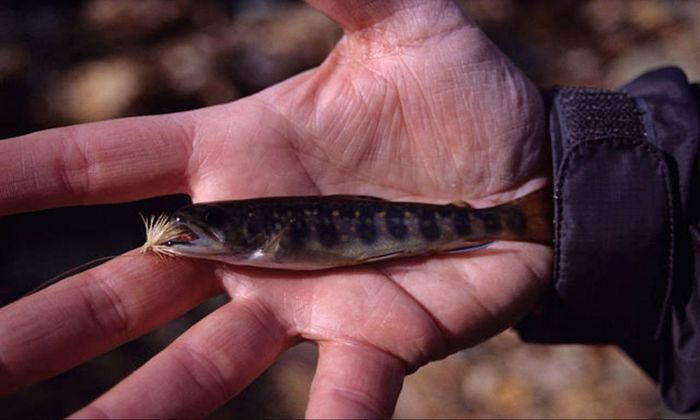10 Tips for Fishing Rainbow Trout
Many anglers are fascinated by rainbow trout because of their color patterns. Here is how you can effectively catch one!
Rainbow trout is a North American native commonly found in the rivers and lakes west of the Rocky Mountains. Anglers view rainbow trout as a challenging and delicious tasty fish to catch.

Other names of rainbow trout include redband trout, and it is known for its color patterns. These color patterns are based on the trout’s environment, age, and birth conditions. Many anglers would describe trout as a fish that looks like a torpedo.
If you are interested in rainbow trout fishing, here are some tips that can help:

1. Fish Density
One of our trout fishing tips is to scout ahead on which streams are abundant in rainbow trout. Knowing the fish density of each fishing location will help you quickly spot where the fish is hiding or searching for food.
You can check the stocking schedules of public fishing holes because fish conservation groups and marine life organizations often stock native fish in their usual spots.
2. Trout Fishing Depth
Water columns, or the part of a stream where fish usually resides, often change according to weather conditions. Rainbow trout generally swim closer to the banks and shores on a rainy day, but these freshwater fish prefer to swim in deeper water on a sunny day. Rainbow trout are among the “cold-water” fishes, so they would logically go to deeper water where it is colder on warmer days.
3. Different Bait Options for Trout
Rainbow trout are picky eaters, and they may pass up on your bait if they are not good enough. Live bait such as minnows, eggs, or shrimp is best against rainbow trout.
You can also use artificial bait with a pungent smell. However, this may cost you more. Make sure you prepare different types of lures with you. You can try out which kind works best for rainbow trout.
4. Change Your Bait Colors
When it comes to recognizing colors, rainbow trout are among those who have an excellent eye for color. Aside from being picky eaters, rainbow trout are attracted to specific patterns, so make sure that you choose a deep bait that will quickly catch the eye of the rainbow trout.

If the rainbow trout is in muddy waters or is covered with underground structures such as seaweed or rocks, you can choose something that has neon colors on it. Neon colors are also effective at attracting rainbow trout swimming in deeper waters. You can always change the colors of your bait if you think that one bait is not effective enough. Before changing spots, make sure to note which color of the bait works to use again when you come back.
5. Trout Fishing Lures
Using lures and live bait increases the chances of getting rainbow trout to bite and get hooked. You can carry different lures, but it is best to combine weights, colors, sizes, and even several hooks.
Aside from live bait, you can also try flies. Fly fishing is one of the most common ways to catch trout varieties, such as brown trout, rainbow trout, brook trout, lake trout, and more. You may utilize wet and dry fly fishing to snag a good catch.
If you are not familiar with trout lures, you can go to any fishing store and just get the basic one. It is best to start simple and then apply your preferences when you get the hang of it.
6. Trout Can Smell Bait
Rainbow trout are among the few types of fish with a good sense of smell. Rainbow trout have holes called “nares” in their anatomy that sharpen their scent. So if you drop a bait with a pungent odor, you will increase your chances of catching rainbow trout. However, do not use poisonous bait that pollutes the water column and kills other fish.
7. Trout Can See
Rainbow trout are among the top. You can use this to your advantage by using different setups. Instead of the usual single hook attached to your line, a rig with multiple live baits is more noticeable for the rainbow trout.
8. Trout Fishing Location
You need to set up where the fish are residing. Similar to how you scout fish density, you would want to fish in a location where you feel safe and can go back to dry land without any problems. There will be times when rainbow trout you can find in streams or deeper waters where the current is strong, and you might have difficulty navigating through.
When scouting a suitable fishing location, make sure you have a familiar route. Rainbow trout are the type to move around often, so you could use this to your advantage. Memorize when rainbow trout are in a particular area and come there to catch them.
9. Plan Your Trip
Even though it sounds cliche, a proper plan will make your freshwater fishing trips the difference-maker. Of course, not all plan details will be followed in the letter, but you have a guide on how to fish for rainbow trout on your freshwater fishing trip.
You can catch a rainbow trout during your ice fishing trip. Before leaving for your ice fishing trip, check your ice fishing gear and if you have a sufficient supply of tackle. Do not forget to check weather reports, fishing routes, and places where rainbow trout are abundant.
10. Sit and Watch
Finally, when you have prepared and executed your plan, there is not much to do but wait for a bite to come. Sitting and watching on your boat is not as unproductive as you may think. One of the few benefits of doing this is letting the fish naturally come to you instead of changing places often to find the fish. Also, you can enjoy the scenery and get a good view of the beautiful nature while you are fishing.




